- News
- Reviews
- Bikes
- Components
- Bar tape & grips
- Bottom brackets
- Brake & gear cables
- Brake & STI levers
- Brake pads & spares
- Brakes
- Cassettes & freewheels
- Chains
- Chainsets & chainrings
- Derailleurs - front
- Derailleurs - rear
- Forks
- Gear levers & shifters
- Groupsets
- Handlebars & extensions
- Headsets
- Hubs
- Inner tubes
- Pedals
- Quick releases & skewers
- Saddles
- Seatposts
- Stems
- Wheels
- Tyres
- Tubeless valves
- Accessories
- Accessories - misc
- Computer mounts
- Bags
- Bar ends
- Bike bags & cases
- Bottle cages
- Bottles
- Cameras
- Car racks
- Child seats
- Computers
- Glasses
- GPS units
- Helmets
- Lights - front
- Lights - rear
- Lights - sets
- Locks
- Mirrors
- Mudguards
- Racks
- Pumps & CO2 inflators
- Puncture kits
- Reflectives
- Smart watches
- Stands and racks
- Trailers
- Clothing
- Health, fitness and nutrition
- Tools and workshop
- Miscellaneous
- Buyers Guides
- Features
- Forum
- Recommends
- Podcast
review
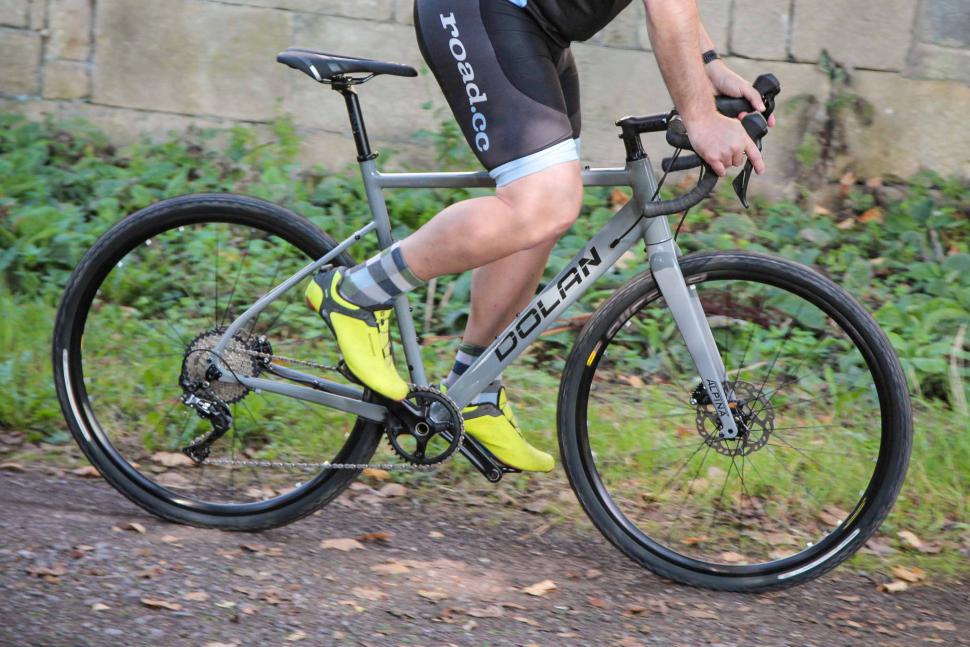 2022 2022 Dolan GXA Aluminium Disc Gravel Bike - riding 1.jpg
2022 2022 Dolan GXA Aluminium Disc Gravel Bike - riding 1.jpg£1,699.99
VERDICT:
Good all-rounder best suited to bad tarmac and dirt roads rather than technical trails
Versatile
Good value
Narrow 1x gear range
Road-bike-like handling
Weight:
10,090g
Contact:
At road.cc every product is thoroughly tested for as long as it takes to get a proper insight into how well it works. Our reviewers are experienced cyclists that we trust to be objective. While we strive to ensure that opinions expressed are backed up by facts, reviews are by their nature an informed opinion, not a definitive verdict. We don't intentionally try to break anything (except locks) but we do try to look for weak points in any design. The overall score is not just an average of the other scores: it reflects both a product's function and value – with value determined by how a product compares with items of similar spec, quality, and price.
What the road.cc scores meanGood scores are more common than bad, because fortunately good products are more common than bad.
- Exceptional
- Excellent
- Very Good
- Good
- Quite good
- Average
- Not so good
- Poor
- Bad
- Appalling
The quick handling of Dolan's GXA gravel bike makes it a blast for whizzing round on dirt roads, but that handling and a conventional stock handlebar make it less suited for anything trickier.
If you're interested in the Dolan GXA, read our guide to the best gravel bikes for more choices, at various prices.
Ride & handling
The GXA's handling is, depending on your taste, either responsive or a bit twitchy. I wanted it to be steadier when I was following the ruts on the ancient Worsted Way, my local Roman road, but I was glad of its agility when switching lines on the permanently-wet bridleway that drops from the ridge to Linton with its excellent cake shop.
> Buy now: Dolan GXA gravel bike for £1,699 from Dolan
At speed on easy surfaces, the GXA zooms along nicely. Grab it by the scruff of the neck and show it who's boss, with a firm hand on descents and a proper monstering in corners, and you soon find its sweet spot. With road tyres or a multi-surface tyre like the Vittoria Terreno Zero or Terreno Dry it'd be great for eating up summer miles on back lanes and forest roads.
But it does tend to wander at low speeds. Climbing on narrow singletrack requires constant course corrections, which can get irritating. On the other hand, you can exploit this trait on semi-technical trails because it allows you to change direction in an instant as you play Hunt The Line on steep climbs. Swings, roundabouts.
One problem is that the Deda RHM handlebar fitted as standard is just too narrow and has no flare, so switching to the drops for maximum control when things get tricky just doesn't help. I took advantage of the weather this week to get out for a spin in the snow (I love off-road riding in snow, it's just so silly), but I ended up on my arse several times, with two days of aches and pains to remind me that I'm not a rubber 25-year-old any more. Ibuprofen FTW. There are plenty of options to customise the build, though, including a gravel bar for more money – more on that later.
The GXA's head angle is 72 degrees, which is on the steep side by modern gravel standards. A shallower head angle might well calm the handling.
Braze-ons
The GXA isn't quite as festooned with mounting points as some gravel bikes, but it still has plenty. There are three pairs of bottle bosses (two in the usual places plus one under the down tube), mounts for rack and mudguards, and a pair on the top tube for a snack box.
Oddly, the fork has no mounts for the mini-racks many lightweight bikepackers favour. Dolan offers a £100 upgrade to the Dolan GXA Carbon Gravel Adventure Fork with three bolts on each leg, which seems like quite a bit of money for six threaded inserts.
Groupset
The GXA is available in various builds, at various prices, including Shimano 105 for £1,599.98, GRX 810 and 2x11 gears for £2,199.98, GRX Di2 for £3,399.98 and a touring bike version with 105 Di2 for £2,299.99, with options to customise each build further.
This Shimano GRX RX600 1X11 HDR model on test has a mix of GRX components: an RD-RX812 rear derailleur, ST-RX600 brake/shift levers, BR-RX400 brakes and RX600 chainset. It's all eminently functional stuff.
The gears click into place with the usual Shimano aplomb and the brakes have plenty of easily controlled stopping power.
For more on GRX see Mike Stead's in-depth review from 2020. I can't find anything to disagree with there, though it's a pity Mike's prediction of more gear options hasn't materialised.
Gearing
For this build Dolan has gone for the single-chainring version of Shimano's GRX components, combining a 40-tooth chainring with an 11-42 cassette. This just isn't a big enough gear range for the wide variety of terrain this bike can tackle.
> How to get ultra-low gearing for gravel bike adventures
I found myself struggling up anything steeper than a 10 per cent grade; yes, it's doable, but it's no fun. The 14 per cent section of my steepest local bridleway hurt, and that's in Cambridgeshire ferchrissakes. I can't imagine toiling up a long, steep section in the Dales or Quantocks with this gearing.
Single-chainring gear systems have come to gravel bikes from mountain biking, where SRAM’s gert huge-range cassettes make sense. When you're talking a 34-tooth chainring with a 12-speed, 10-52 range out back, that still gives you a really low bottom gear and sacrifices the high end. But on a gravel bike you want range: a high top gear for road descents and a low gear for off-road that really needs to be almost as low as a mountain bike's.
You just can't do that with the current 1x11 systems from either Shimano or SRAM. You get an 11-42 option from Shimano and a somewhat better 10-42 cassette from SRAM, but SRAM blows it by offering a 40-tooth chainring as the smallest option in Force 1, Rival 1 and Apex 1, same as Shimano GRX.
The good news as far as Dolan is concerned is that you can choose a double-chainset version of the GRX groupset for just another £100, which lands you a 30x34 low gear and the possibility of going lower still by fitting an 11-40 or even 11-42 cassette (per Shimano they're not supposed to work, but they can be persuaded to with careful adjustment).
Finishing kit
The standard spec of the GXA includes the Deda RHM handlebar fitted here. It's a rightly well-regarded handlebar for road riding, with careful shaping that makes it easy to switch positions. However, it's very much a standard road shape with no flare and a 130mm drop. If you want a flared bar then Dolan will fit a Deda Gravel 100 bar and stem, but that's an extra £100.
The stock bar really holds the GXA back. I improved things a little by flipping the stem to raise the bar as far as it would go, lifting the drops so that I could use them comfortably on descents and when zooming round the woods, but I still wanted them wider. Dolan should really fit the Gravel 100 as standard.
I was pleasantly surprised by the Selle Italia X1 Flow saddle, as comfy a place to park my bum as any I've used, and narrow enough to facilitate moving around on the bike, which you do more of when riding away from the tarmac. For an inexpensive seat, it's startlingly good.
It's supported by an Alpina seatpost that provides fine adjustment of saddle angle with a cradle comprising two curved pieces, held secure by a pair of bolts. Nothing remarkable, but it works.
Tyres on our build are 700 x 43 Panaracer Gravel King SK, though these are a £69.98 upgrade over the Continental Ultra Sport III that are the standard spec. Fitted to Mavic Allroad wheels, the Gravel King SKs measure bang on 43mm; there's room for something much bigger, though Dolan conservatively rates the frame as only having space for 45mm tyres in 700C, or 50mm in 650B.
The grip and versatility of the Gravel King SKs makes them a long-standing road.cc favourite. They really enhance the Dolan GXA, providing secure grip on pretty much any surface except deep mud. There's not much of that round here but they worked well on sandy and gravelly trails and dirt roads, loamy singletrack and various rock-strewn tracks. They were even pretty decent on fresh snow.
Value
The GXA is very good value for money compared with many of its rivals.
The Cube Nuroad EX we reviewed in October has a similar spec for £1,649, with a flared bar and steadier handling, but some other competitors are a lot more expensive.
You can pay £2,200 for a Specialized Diverge Elite E5, for example, or £2,000 for Scott's Speedster Gravel 20; both have double chainsets so are more comparable to the double-clanger version of the GXA, which is another £100 and still plenty cheaper than the Scott or Specialized.
Conclusions
I find myself a bit ambivalent about the Dolan GXA. For a start it's not, as Dolan bills it, 'the ultimate gravel bike'. Rather, with its conventional handlebar and 72-degree head angle, it's more like a fat-tyre road bike or an old school touring bike, albeit with quicker handling than touring bikes typically have.
That's no bad thing, but it does narrow the situations that best suit the GXA. It's a bike for exploring tiny, crumbling lanes with grass down the middle, forest roads and easy trails, and it's very good value for money.
Who should buy the Dolan GXA?
Although Dolan bills the GXA as a gravel bike, its handling and conventional handlebar make it a bit of a sheep in wolf's clothing in this spec, especially if you don't choose the upgrade to the Gravel King SK tyres. However, you'd be better off buying the base spec and fitting multi-purpose tyres rather than pure knobbies, which would make the GXA a versatile back-road explorer.
If that's your intended use then the GXA is a good choice. With road tyres it works just as well as a club run bike as it does as a dirt roader with knobbies. In fact it's the sort of bike that almost insists you have two pairs of wheels for it so you can quickly and easily switch between tarmac and dirt.
Verdict
Good all-rounder best suited to bad tarmac and dirt roads rather than technical trails
road.cc test report
Make and model: Dolan GXA Aluminium Disc Gravel Bike
Size tested: 56cm
About the bike
List the components used to build up the bike.
Frame: GXA aluminium
Fork: Dolan GXA Carbon Disc Gravel Fork
Chainset: Shimano GRX RX600 1x11 Chainset - 172.5mm - 40T
Bottom bracket: Shimano BB-R60
Rear derailleur: Shimano GRX RD-RX812
Cassette: Shimano CS-M7000 SLX 11-42
Chain: KMC X11
Brake/Shift levers: Shimano GRX ST-RX600 HDR
Brakes: Shimano GRX BR-RX400
Rotors: Shimano RT70 Center Lock, 160mm front, 140mm rear
Wheels: Mavic Allroad Disc
Tyres: Panaracer GravelKing SK TLC Folding 700x43
Stem: Deda Zero
Handlebar: Deda Zero RHM
Handlebar Tape: Deda
Seatpost: Alpina 27.2mm Aluminium Seatpost (350mm, Setback)
Saddle: Selle Italia Model X SuperFlow
Tell us what the bike is for and who it's aimed at. What do the manufacturers say about it? How does that compare to your own feelings about the bike?
Dolan says: "The GXA is for the full spectrum of riders, from those who want to explore local gravel roads up those adventurous souls wishing to compete in epic self-supported stage races like the Silk Road Mountain Race. The GXA is engineered for supreme performance on rough roads all the while providing that reassuring smoothness associated with a quality build. Customisable with mechanical or electronic groupsets, the GXA allows you to expand your horizons on what is the ultimate gravel machine."
And also:
"As agile on the flat as it is responsive on winding gravel descents, the GXA glides on any surface. Quite simply, it's the most versatile adventure machine both on and off the road. The GXA utilises triple butted lightweight aluminium tubing with internal cable routing, guaranteeing premium-level style and performance. While carbon forks provide supreme dampening and control on rougher technical surfaces. We offer a choice of wheel builds to meet your riding expectations. The frameset is compatible with 650b and 700c wheelsets, with clearances of 50mm and 45mm respectively. The result is a ride engineered for supreme speed and smoothness that adapts to the imperfections of any terrain."
Where does this model sit in the range? Tell us briefly about the cheaper options and the more expensive options
This is the second cheapest build of GXA that Dolan offers. Other options include a version with 105 for £1,599.98, GRX 810 and 2x11 gears for £2,199.98, GRX Di2 for £3,399.98 and a touring bike version with 105 Di2 for £2,299.99.
Frame and fork
Overall rating for frame and fork
8/10
Tell us about the build quality and finish of the frame and fork?
Tidy welds and decent paint.
Tell us about the materials used in the frame and fork?
The frame is triple butted aluminium, the fork is all carbon.
Tell us about the geometry of the frame and fork?
Our 56cm sample has a reach of 380mm and stack of 592mm with a 560mm effective top tube. Seat angle is 73°, head angle is 72°.
How was the bike in terms of height and reach? How did it compare to other bikes of the same stated size?
It's neither stretched out like a race bike nor as upright as more progressive gravel bikes.
Riding the bike
Was the bike comfortable to ride? Tell us how you felt about the ride quality.
Yes; 43mm tyres will do that.
Did the bike feel stiff in the right places? Did any part of the bike feel too stiff or too flexible?
It's very aluminium.
How did the bike transfer power? Did it feel efficient?
It doesn't have that wahey! factor of a very lightweight carbon bike, but that's because it's not a very lightweight carbon bike. In its class, yes, it feels good.
Was there any toe-clip overlap with the front wheel? If so was it a problem?
No.
How would you describe the steering? Was it lively neutral or unresponsive? It's lively, and in some circumstances it's too lively.
Tell us some more about the handling. How did the bike feel overall? Did it do particular things well or badly?
The steering tends to wander a bit at low speeds and is twitchy in technical situations. It probably needs to lose a degree or two from the head angle. But wind it up on a dirt road and it whizzes along very nicely.
Which components had the most effect (good or bad) on the bike's comfort? would you recommend any changes?
The basic Selle Italia saddle was a very pleasant surprise. A wider, flared bar and handlebar tape with a bit more cushion would be improvements.
Rate the bike for efficiency of power transfer:
7/10
Rate the bike for acceleration:
7/10
Rate the bike for sprinting:
7/10
Rate the bike for high speed stability:
8/10
Rate the bike for cruising speed stability:
7/10
Rate the bike for low speed stability:
5/10
Rate the bike for flat cornering:
7/10
Rate the bike for cornering on descents:
8/10
Rate the bike for climbing:
6/10
The drivetrain
Rate the drivetrain for performance:
7/10
Tell us some more about the drivetrain. Anything you particularly did or didn't like? Any components which didn't work well together?
See the main copy for me complaining about 1X gearing. Again.
Wheels and tyres
Rate the wheels for performance:
8/10
Rate the wheels for durability:
8/10
Rate the wheels for weight:
6/10
Rate the wheels for comfort:
6/10
Tell us some more about the wheels.Did they work well in the conditions you encountered? Would you change the wheels? If so what for?
Mavic Allroads are just one of those solid, can't really go wrong choices.
Rate the tyres for performance:
9/10
Loads of grip and feel until things get really muddy
Rate the tyres for comfort:
9/10
43mm tyres are always going to be comfy!
Tell us some more about the tyres. Did they work well in the conditions you encountered? Would you change the tyres? If so what for?
These are good off-road tyres, but I'd be tempted to go for something that was faster on the road while retaining dirt capability; that'd better suit the nature of the bike.
Controls
Rate the controls for performance:
9/10
Rate the controls for comfort:
9/10
Your summary
Did you enjoy riding the bike? Yes
Would you consider buying the bike? Probably not; I'd go for something more progressive.
Would you recommend the bike to a friend? Only if their riding plans suited its rather narrow use case.
How does the price compare to that of similar bikes in the market, including ones recently tested on road.cc?
The Cube Nuroad EX we reviewed in October has a similar spec for £1,649, with a flared bar and steadier handling, but some other competitors are a lot more expensive. You can pay £2,200 for a Specialized Diverge Elite E5, for example, or £2,000 for a Scott Speedster Gravel 20, both of which have a double chainset so are more comparable to the double-clanger version of the GXA, which is another £100 and still plenty cheaper than the Specialized and Scott.
Rate the bike overall for performance:
7/10
Rate the bike overall for value:
8/10
Use this box to explain your overall score
A solid 7/10 because the GXA doesn't particularly excel at anything, but it's reliable and very good value for money.
About the tester
Age: 56
I usually ride: Scapin Style My best bike is:
I've been riding for: Over 20 years I ride: Most days I would class myself as: Expert
I regularly do the following types of riding: commuting, touring, club rides, general fitness riding, mtb,
John has been writing about bikes and cycling for over 30 years since discovering that people were mug enough to pay him for it rather than expecting him to do an honest day's work.
He was heavily involved in the mountain bike boom of the late 1980s as a racer, team manager and race promoter, and that led to writing for Mountain Biking UK magazine shortly after its inception. He got the gig by phoning up the editor and telling him the magazine was rubbish and he could do better. Rather than telling him to get lost, MBUK editor Tym Manley called John’s bluff and the rest is history.
Since then he has worked on MTB Pro magazine and was editor of Maximum Mountain Bike and Australian Mountain Bike magazines, before switching to the web in 2000 to work for CyclingNews.com. Along with road.cc founder Tony Farrelly, John was on the launch team for BikeRadar.com and subsequently became editor in chief of Future Publishing’s group of cycling magazines and websites, including Cycling Plus, MBUK, What Mountain Bike and Procycling.
John has also written for Cyclist magazine, edited the BikeMagic website and was founding editor of TotalWomensCycling.com before handing over to someone far more representative of the site's main audience.
He joined road.cc in 2013. He lives in Cambridge where the lack of hills is more than made up for by the headwinds.
Latest Comments
- Rendel Harris 16 min 24 sec ago
Mrs H suffers when wearing narrow shoes, just bought her a pair of Giro Berms which she loves and apparently are very comfortable (purchased thanks...
- David9694 37 min 18 sec ago
Car smashes into wall near Exeter Cathedral...
- David9694 47 min 7 sec ago
Driver Who Broke Runner's Spine in Three Places Praised for Waiting Around Until Help Arrived
- Steve K 1 hour 24 min ago
Even if this gets to 100,000 signatures, I suspect the Petitions Committee will simply say there has already been a debate, so no need for another...
- Prosper0 9 hours 15 min ago
Just doing the Lord's work in case anyone's interested in this product. This Mucoff Pump is a £100 rebrand of an £85 Rockbros rebrand of a £60...
- mdavidford 10 hours 3 min ago
Obviously it means 'springing out of the bunch' on a critical sector. Or maybe it's referring to the time of year.
- David9694 10 hours 52 min ago
Woman taken to hospital after flipping car onto roof in Trowbridge...
- A V Lowe 11 hours 34 min ago
Its blindingly obvious from the image that the DKE of the buses include the mirrors which extend to nearly reach the edge of the tarmac pavement on...
- Sredlums 12 hours 7 min ago
It's sad when being very good at your job - any job - isn't enough to earn a decent living. It shouldn't be that way....
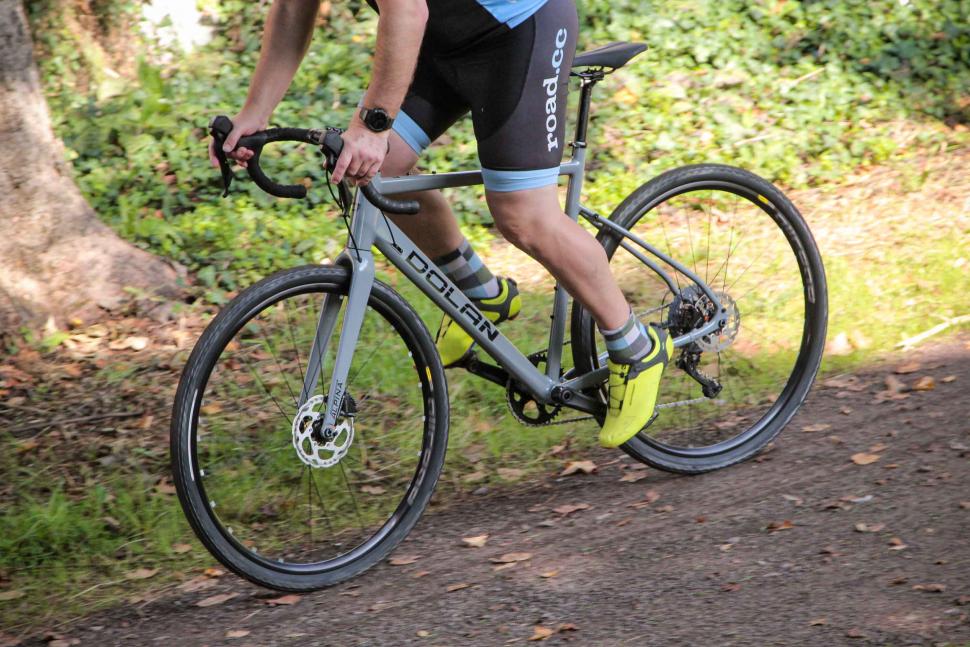
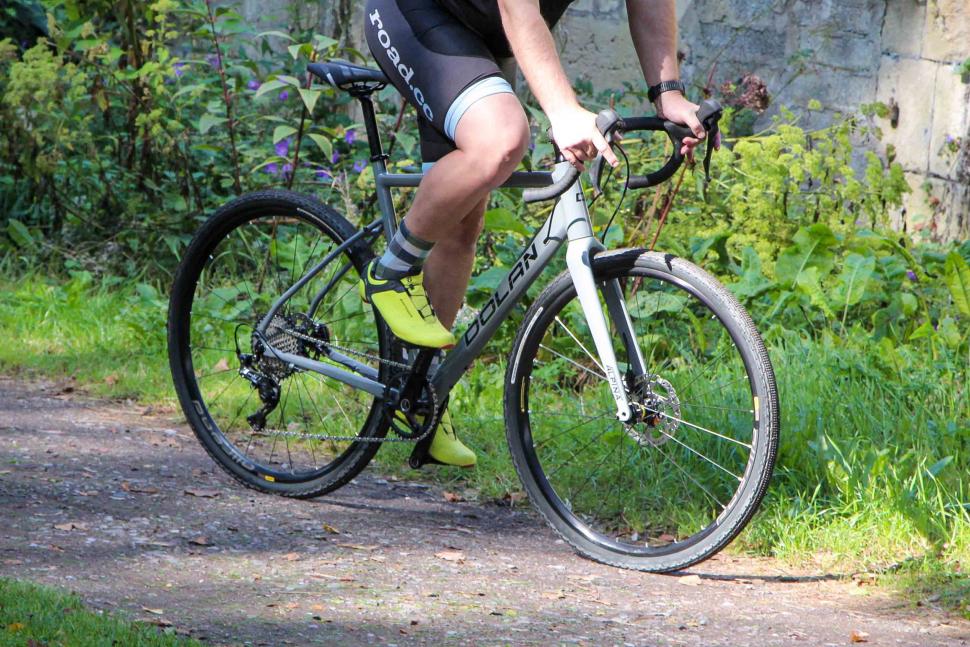
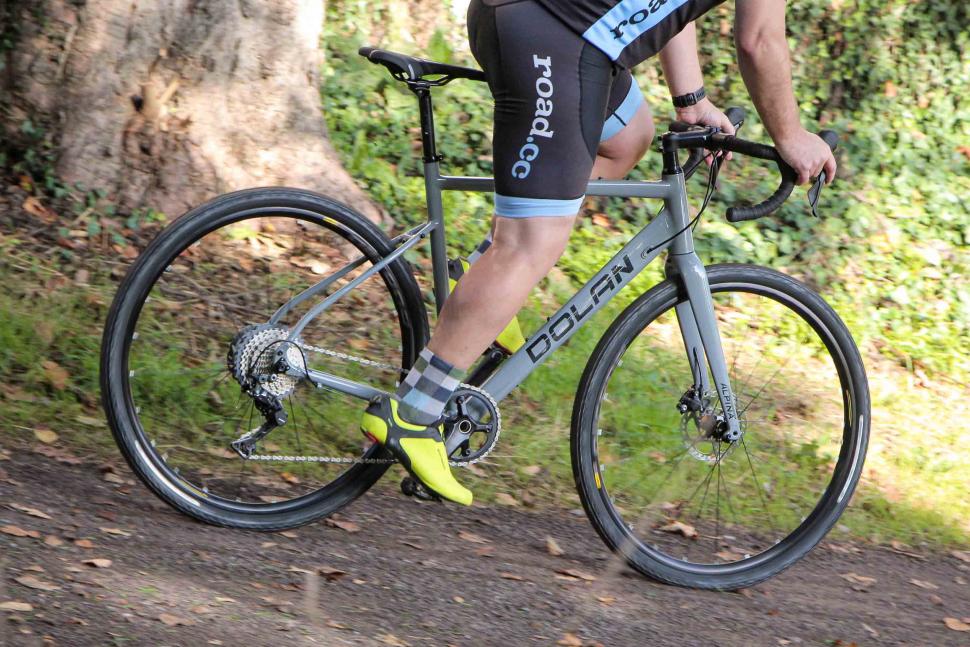



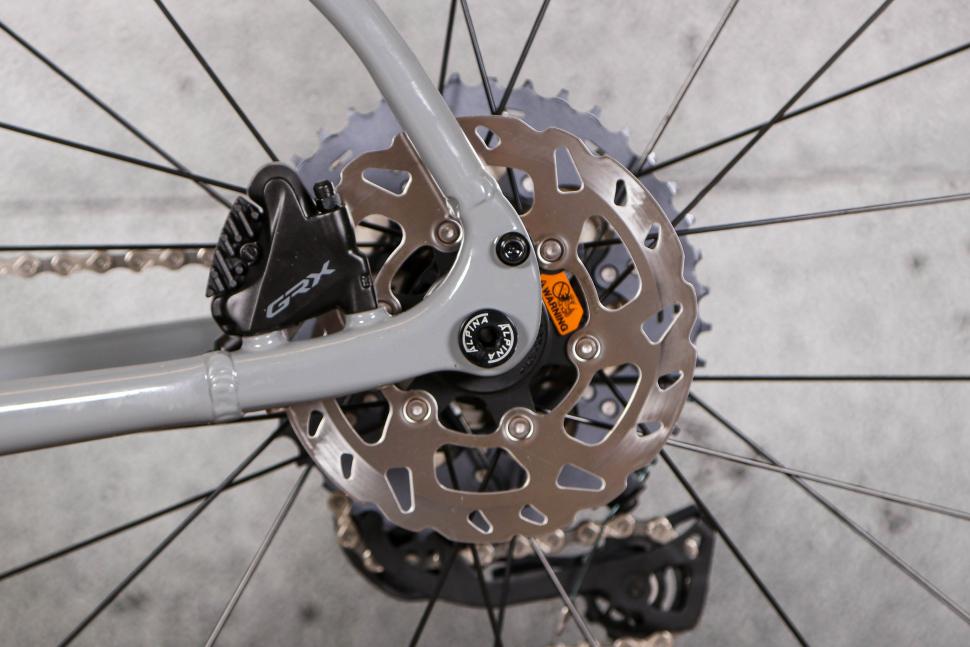

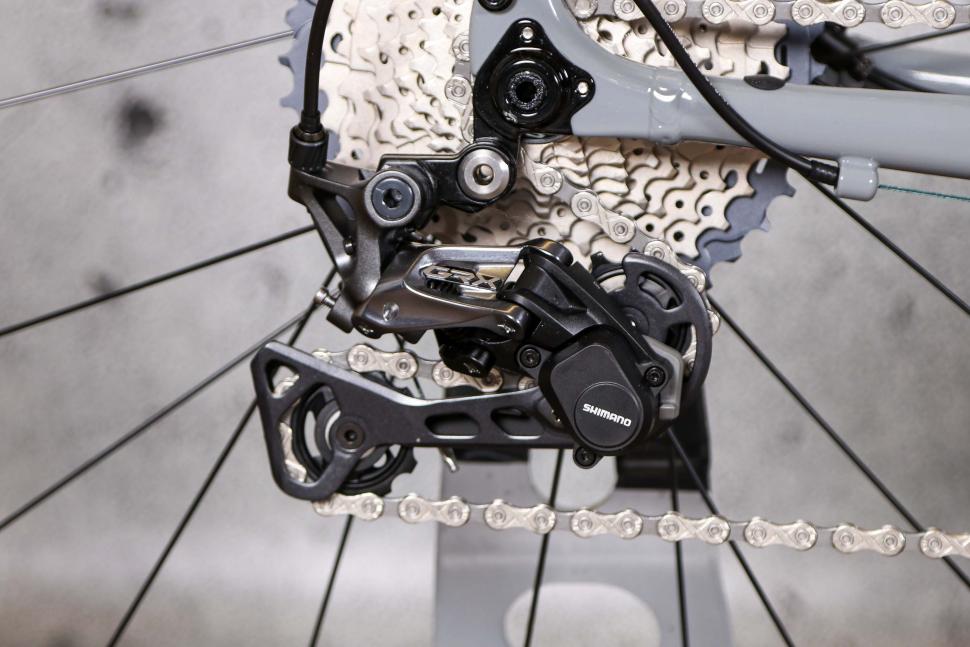












































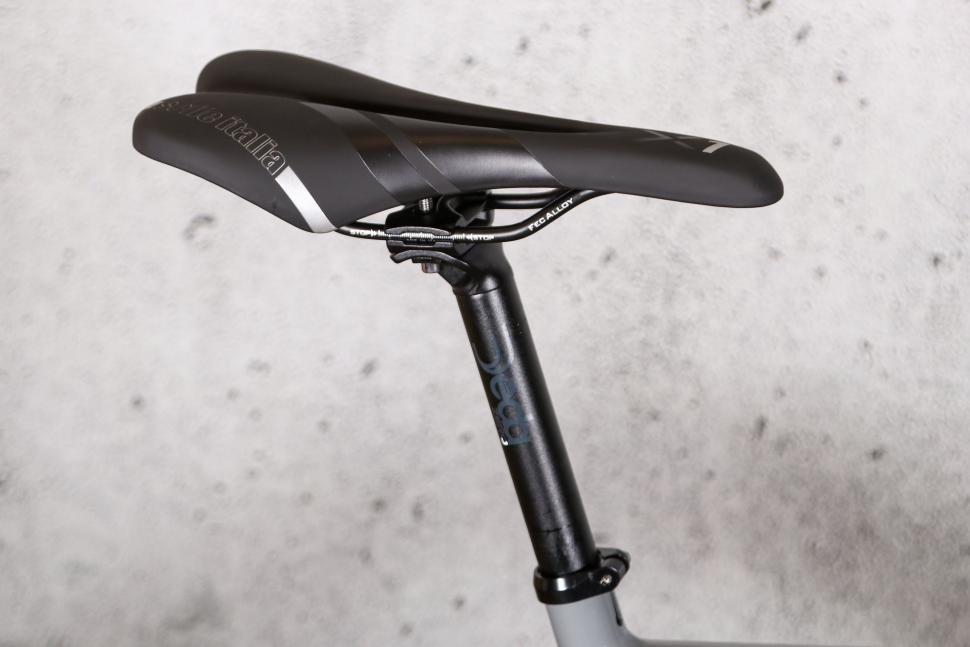

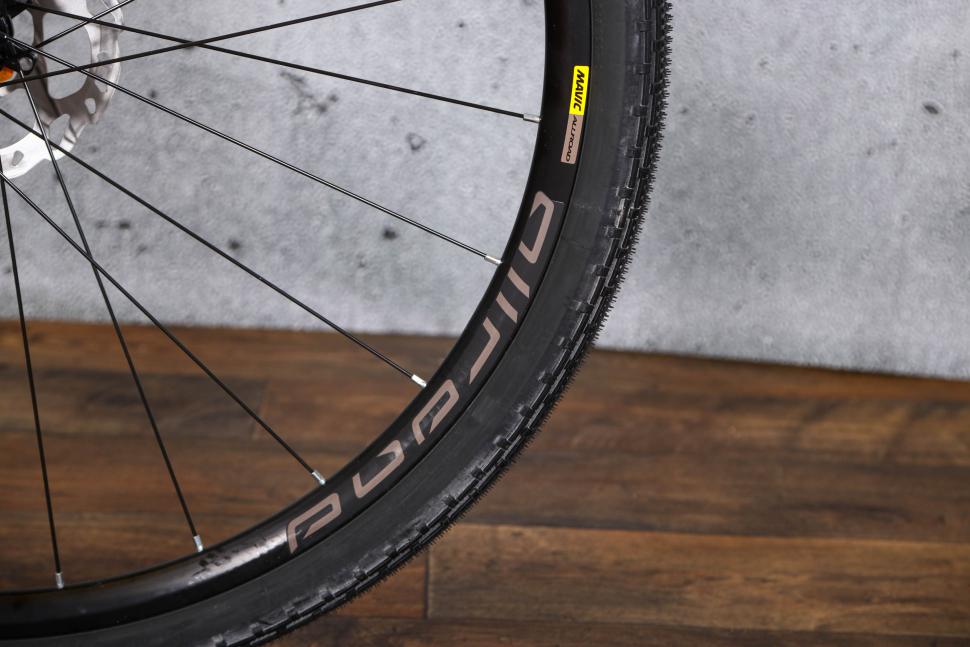


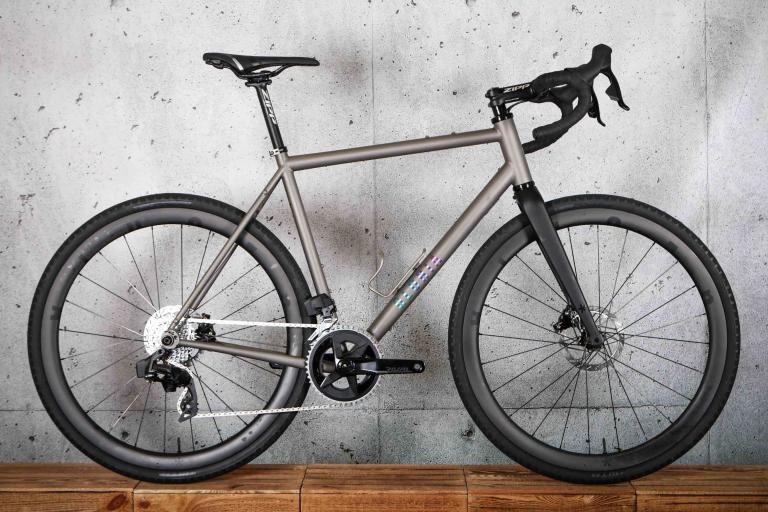
Add new comment
1 comments
I've had a GXA for two years and I love it as my 'go-anywhere' bike. One of the reasons I plumped for the Dolan after MUCH research was that you can customise pretty much any bit of the bike save the frame. I've got a 2 x 11/34 GRX 600 set-up on mine and it's been great; the only time I've had to get off and push was up a 20% climb in Wales when I was fully loaded up with panniers.
I didn't like any of the tyre options but Dolan set up a pair of Schwalbes for me that I posted to them, so they were fitted when I got the bike.
It's probably not a bike for gravel racers but depending on how you equip it it will pretty much get you along most surfaces and you can carry a decent amount on it. I like the fact it's pretty zippy on tarmac as well as fairly comfortable on gravel.
Dolan's customer service is also very good.